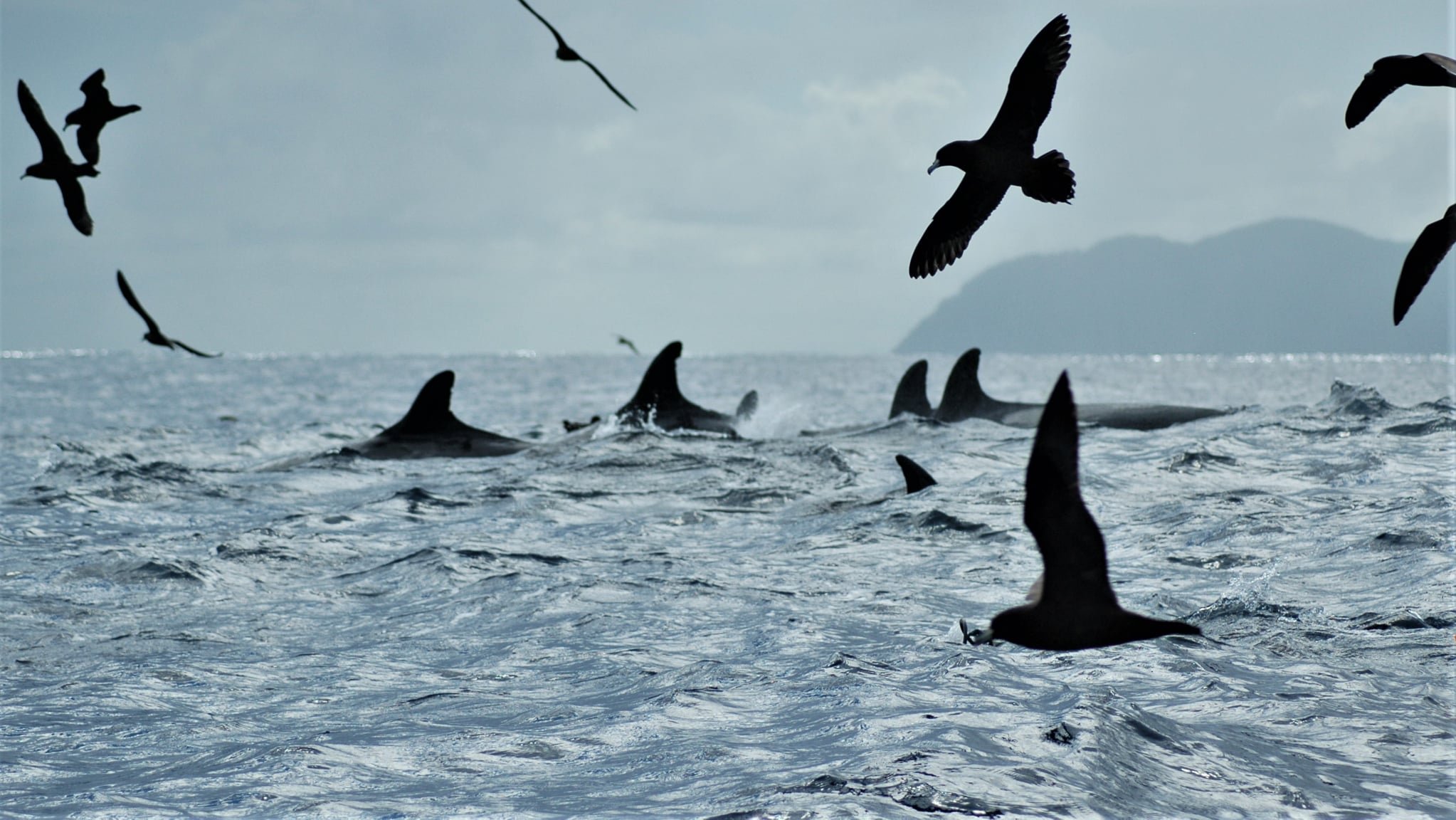Tākoketai - Black Petrel
Note: the Westland Black Petrel is a close relative and is known as taiko, but the local name on Aotea is tākoketai.
Aotea is the lifeboat for these incredible migratory seabirds, which leave their burrows high on Aotea’s ridges in May and fly 14000kms to the East Pacific off Ecuador for the winter. From the age of two or three years they return in October to prepare burrows under the roots of old growth trees on Hirakimatā, (Mount Hobson), the highest point of Aotea, and other high ridges across the island. They are critically endangered with perhaps 2,000 pairs remaining.
Petrels and Dolphins off Aotea (Image: Far Out Ocean Collective)
Extent of Foraging by Breeding Birds (Image: WMIL)
A 2011 study (by Dragonfly) found they are the most at-risk seabird in New Zealand from interactions with the fishing industry. This is primarily because their preferred food, squid, is used in longline fishing for snapper and bluenose, off the north east coast of the North Island. Black petrels are killed after being hooked while diving on baits., some birds are also killed in the trawl fishery and the surface longline fishery. This map shows the extent of foraging by breeding birds from the colony on Aotea over summer.
Black petrels may live for 30 years or more according to Biz Bell, who has been studying them on Hirakimatā for more than 25 years. Check out the work in action here.
Tākoketai in Burrow (Image: Black Petrel Action Group)
Hirakimatā is the peak colony for these birds, other than a small colony on Hauturu Little Barrier. Stoats, feral cats and other predators forced these birds from the mainland sometime in the 20th century, Black petrels used to nest all over the hills and ridges of Aotea, and of the entire North Island. They are a critical part of the forest ecology, returning phosphorous and nitrogen to the soil in their droppings, sustaining the trees, plants, invertebrates, birds and other wildlife. If there are no burrowing seabirds like tākoketai, the forest is not fed. Hirakimatā is cloud forest and the most biodiverse forest in the Auckland region, partly because tākoketai are still there.
East Pacific Tracks (Image: WMIL)
Returning to their burrows in the forest in October each year, they find their mate again and lay just one egg per season in December. Chicks hatch in January and both parents feed them until May, when tough love kicks in and the chicks are left to fledge alone and make their way to the East Pacific.
The survival rate of these chicks is low – only ten percent of fledged birds ever make it back to the colony to breed. While the causes of this very high mortality are not completely clear, it does mean that we have to look after the birds that do make it back to Aotea to breed.
So what is being done to protect them?
Some action has been taken to stop so many breeding adults being killed in interactions with fishing boats, through the Black Petrel accord. On Aotea, we need to stop feral cats, rats and feral pigs from eating eggs, chicks and adults at the colony. If feral cats can be eradicated from Aotea tākoketai may well re-establish all over the island.
The Department of Conservation and MPI fund annual population research on black petrels by WMIL, and began feral cat control on Hirakimata in 2014. In 2021 approximately 200 A24 resetting rat traps were installed on Hirakimata and are reducing rat densities to lower levels.
Emma Waterhouse holding a breeding adult during banding research in January 2020
Other Resources:
You can read more about black petrels here:
A Bad Forecast for Black Petrel: Environmental News 40





